Today’s Deal: Save 60% on Duck Game!*
Look for the deals each day on the front page of Steam. Or follow us on twitter or Facebook for instant notifications wherever you are!
*Offer ends Friday at 10AM Pacific Time Website: LINK
Website: LINK

RimWorld is Now Available on Steam!
A sci-fi colony sim driven by an intelligent AI storyteller. Inspired by Dwarf Fortress and Firefly. Generates stories by simulating psychology, ecology, gunplay, melee combat, climate, biomes, diplomacy, interpersonal relationships, art, medicine, trade, and more. Website: LINK
Website: LINK

Move over, Elon Musk — there’s a new rocket maverick in town: YOU!

Step inside the UK rocketry scene, build and launch a rocket, design your own one, and discover the open-source rocket programmes around the world! In issue 12, we go behind the scenes at a top-secret launch site in the English Midlands to have a go at our own rocket launch, find the most welcoming bunch of people we’ve ever met, and learn about centre of gravity, centre of pressure, acceleration, thrust, and a load of other terms that make us feel like NASA scientists.

In makerception news, we meet the maker who makes makers, Josef Prusa, aka Mr 3D Printing, and we find out what’s next for his open-source hardware empire.
There are more than seven billion people on the planet, and 90-odd percent of them are locked out of the pursuit of science. Fishing, climate change, agriculture: it all needs data, and we’re just not collecting as much as we should. Global Open Science Hardware is working to change that by using open, shared tech — read all about it in issue 12!
As always, the new issue is packed with projects: make a way-home machine to let your family know exactly when you’ll walk through the front door; build an Alexa-powered wheel of fortune to remove the burden of making your own decisions; and pay homage to Indiana Jones and the chilled monkey brains in Temple of Doom with a capacitive touch haunted monkey skull (no monkeys were harmed in the making of this issue). All that, plus steampunk lighting, LEDs, drills, the world’s biggest selfie machine, and more, just for you. So go forth and make something!
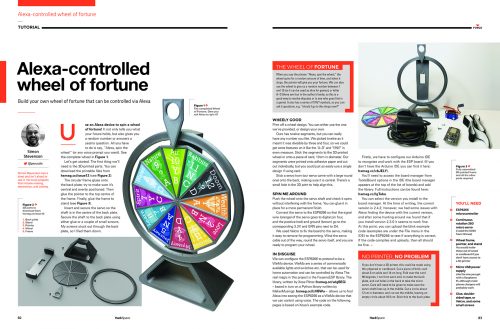
If you like the sound of this month’s content, you can find HackSpace magazine in WHSmith, Tesco, Sainsbury’s, and independent newsagents in the UK from tomorrow. If you live in the US, check out your local Barnes & Noble, Fry’s, or Micro Center next week. We’re also shipping to stores in Australia, Hong Kong, Canada, Singapore, Belgium, and Brazil, so be sure to ask your local newsagent whether they’ll be getting HackSpace magazine. And if you’d rather try before you buy, you can always download the free PDF now.
“Subscribe now” may not be subtle as a marketing message, but we really think you should. You’ll get the magazine early, plus a lovely physical paper copy, which has a really good battery life.
Oh, and twelve-month print subscribers get an Adafruit Circuit Playground Express loaded with inputs and sensors and ready for your next project. Tempted?
Website: LINK

Save up to 90% on Codemasters titles during the Codemasters Publisher Week*!
*Discounts end Monday October 22nd 10AM PDT.
 Website: LINK
Website: LINK

Today’s Deal: Save 35% on MOTHERGUNSHIP!*
Look for the deals each day on the front page of Steam. Or follow us on twitter or Facebook for instant notifications wherever you are!
*Offer ends Thursday at 10AM Pacific Time Website: LINK
Website: LINK

Save 30% to 85% on all Sonic The Hedgehog titles during this week’s Midweek Madness*!
*Offer ends Thursday at 4PM Pacific Time


 Website: LINK
Website: LINK

FOR HONOR™ : Marching Fire Expansion, all new content for FOR HONOR™ is Now Available on Steam!
The Wu Lin Faction is coming! Expand your world with 4 new Heroes instantly- the Tiandi, the Shaolin, the Jiang Jun and the Nuxia. Also get Day 1 access to the new Arcade Mode, an endless PVE experience playable solo or co-op with a friend.
 Website: LINK
Website: LINK

In HackSpace issue 9, Dave Astels helps us get familiar with what electricity is, with some key terms and rules, and with a few basic components. Get your copy of HackSpace magazine in stores now, or download it as a free PDF here.

tl;dr There’s more to electricity than Pikachu.
Electricity is fascinating. Most of our technology relies on it: computers, lights, appliances, and even cars, as more and more are hybrid or electric. It follows some well-defined rules, which is what makes it so very useful.
According to Wikipedia, electricity is ‘the set of physical phenomena associated with the presence and motion of electric charge’. And what’s electric charge? That’s the shortage or excess of electrons.
Let’s go back (or forward, depending on where you are in life) to high school science and the atom. An atom is, at a very simplified level, a nucleus surrounded by a number of electrons. The nucleus is (again, viewing it simply) made up of neutrons and protons. Neutrons have no charge, but protons have a positive charge. Electrons have a negative charge. The negative charge on a single electron is the exact opposite of the positive charge on a single proton. The simplest atom, hydrogen, is made from a single proton and a single electron. The net charge of the atom is zero: the positive charge of the proton and the negative charge of the electron cancel – or balance – each other. An atom’s electrons aren’t just in an amorphous cloud around the nucleus: you can think of them as being arranged in layers around the nucleus…rather like an onion. Or perhaps an ogre. This is a very simplified visualisation of it, but it suffices for our purposes.
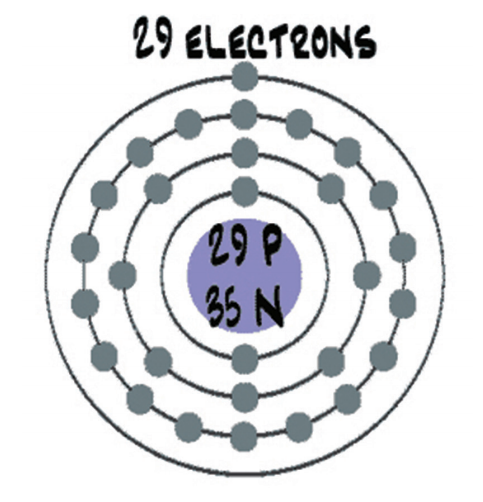
Figure 1: A very stylised representation of a copper atom with its electron shell
In a more complex atom, say copper, there are more protons, neutrons, and electrons, and the electrons are in more layers. By default, a copper atom has 29 protons and 35 neutrons in its nucleus, which is surrounded by 29 electrons. The way the electrons are distributed in their layers leaves the copper atom with a single electron in the outermost layer. This is represented in Figure 1 (above). Without getting further into subatomic physics, let’s just say that having that single electron in the outermost layer makes it easier to manipulate. When we put a bunch of copper atoms together to make copper metal (e.g. a wire), it’s easy to move those outermost electrons around inside the metal. Those electrons moving around is electricity. The amount of electrons moving over a period of time is called ‘current’.

A single 10 kΩ resistor reads almost 10 000 ohms (no electrical component is perfect).
We started by talking about electrons and charge. Look back at the Wikipedia definition: ‘presence and motion of electric charge’. Charge is measured in coulombs: 1 coulomb is approximately 6.242 × 1018 electrons. That’s 6 242 000 000 000 000 000 electrons. They’re very small. Actually, this would be -1 coulomb. +1 coulomb would be that many protons (or really, the net lack of that many electrons).
That’s charge. Now let’s consider moving charge, which is far more useful in general (unless your goal is to stick balloons to the wall). Consider some amount of charge moving through a wire. The amount of charge that moves past a specific point (and thus through the wire) over a period of time is called ‘current’ (just like the current in a river) and is measured in amperes, generally just called amps. Specifically, 1 amp is equal to 1 coulomb flowing past a point in 1 second.
Another common term is voltage. You can think of voltage like water pressure; it’s the pressure pushing the electrons (i.e. charge) through a material. The higher the voltage (measured in volts), the faster charge is pushed through, i.e. the higher the current.
The final term is resistance, measured in ohms. Resistance is just what it sounds like. It’s a measure of how much a material resists the movement of electrons. We said that copper allows electrons to move freely. That’s what makes it so common for wires, PCB traces, etc. We say that it is a good conductor. Glass, on the other hand, locks its electrons in place, not letting them move. It’s an example of a good insulator. There are materials that are in between: they let electrons move, but not too freely. These are crucial to making electronics work.
There’s an interesting (and useful) relationship between voltage, current, and resistance called Ohm’s Law (Georg Ohm was the fellow who explored and documented this relationship): the current (denoted I, in amps) flowing through a material is equal to the voltage across the material (denoted V, in volts) divided by the material’s resistance (denoted R, in ohms): I = V/R. This equation is foundational and, as such, very handy.
There aren’t many electronic devices that don’t have at least one LED on them somewhere, especially not gadgety ones. If you look at a simple Arduino Uno, it has LEDs for power, Tx, Rx, and pin 13. The first program using electronic components that most people try is one to blink an LED.

Figure 2: The colour spectrum
LED stands for light-emitting diode. We’ll come back to diodes in a later instalment; all we need to know right now is that a diode has to go the right way around. So that leaves ‘light-emitting’. That simply means that it gives off light: it lights up. Specifically, it lights up when enough current flows through it. Be careful, though. Put too much current through it and it’ll likely crack in two. Seriously, we’ve done it. Best case scenario, you’ll get a bright pulse of light as it burns out. How much current do they like? 20 milliamps (20mA) is typical. Because an LED is a diode, i.e. a semiconductor (we’ll look at these in more detail in a future instalment too), it defies Ohm’s Law. How? It always has the same voltage across it, regardless of the current flowing through it.
An LED will have a specific Vf (f is for forward, as in ‘forward voltage’), which will be defined in its data sheet.
The voltage varies with the colour of light that the LED emits, but usually between 1.8V and 3.3V. Vf for red LEDs will typically be 1.8V, and for blue LEDs 3V–3.3V. As a rule, LEDs with a higher frequency colour will have a larger Vf. Figure 2 (above) shows the colour spectrum. Colours on the right end are lower in frequency and LEDs emitting those colours will have a lower Vf, while those on the left end have a higher frequency and a higher Vf.
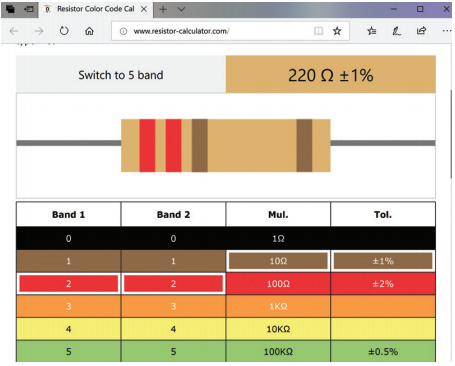
Resistor colour bands show the resistance. Online calculators can help you learn the values.
So an LED will have a fixed Vf, and a typical LED that we’ll use likes about 20mA of current. An LED won’t do anything to limit how much current is flowing through it. That’s what we meant when we said it defies Ohm’s Law.
If we take a blue LED and hooked it to a 3.3V power supply, it will shine happily. Do the same thing with a red LED, and it will blink and burn out. So how do we deal with that? How do we use 3.3V or 5V to make an LED light up without burning out? We simply limit the current flowing through it. And for that, we need a resistor and Ohm’s Law.

Figure 3: An LED with a current-limiting resistor
If we want to power a red LED from a 5V source, we know the following information: current has to be 20mA, Vcc will be 5V, and the voltage across the LED will be 1.8V. Consider the circuit in Figure 3. The voltage across the resistor will be Vcc – Vf, i.e. 5 – 1.8 = 3.2V. We said the current through the LED should be 20mA. Since there is only one path through the circuit that goes through the resistor as well as the LED, all current has to flow through both: whatever amount of current flows through the resistor has to flow through the LED, no more, no less. This is the crucial thing to realise. We can calculate the value of the resistance needed using Ohm’s Law: R = V/I = 3.2V/20mA = 3.2V/0.020A = 160 ohms.
The resistor should have a value of 160 ohms to allow 20mA of current to flow through the LED. Knowing that the 20mA and 1.8V values are approximate and that resistors are not exact (+/- 5 or 10 percent are the most common), we chose a slightly higher-value resistor. Considering common resistor values, go with 180 ohm or 220ohm. A higher-value resistor will allow slightly less current through, which might result in a slightly dimmer light. Try it and see. For practical purposes, simply using a 220 ohm resistor usually works fine.
In the previous section we connected a resistor and an LED end to end. That’s called a series circuit. If we connected them side by side, it would be a parallel circuit. Consider the circuits in Figure 4.

Figure 4: A – series circuit; B – parallel circuit
We’ll use 5V for Vcc. What is the total resistance between Vcc and GND in each circuit? How much current is flowing through each circuit? What is the voltage across each resistor?
When resistors are connected in series, as in circuit A, the resistances are added. So the two 100 ohm resistors in series have a total resistance of 200 ohms.
When resistors are connected in parallel, as in circuit B, it’s more complex. Each resistor provides a path for current to flow through. So we could use an indirect method to calculate the total resistance. Each resistor is 100 ohms, and has one end connected to 5V and the other to 0V (GND), so the voltage across each one is 5V. The current flowing through each one is 5V/100 ohms = 0.05A, or 50mA. That flows through each resistor, so the total current is 100mA, or 0.1A. The total resistance is then R = V/I = 5V/0.1A = 50 ohms. A more direct way is to use the equation 1/Rt = 1/R1 + 1/R2 + … + 1/Rn, where Rt is the total resistance, and R1, R2, etc. are the values of the individual resistors that are in parallel. Using this, 1/Rt = 1/100 + 1/100 = 2/100 = 1/50. So Rt = 50. This is a quicker way to do it, and only involves the resistor values.

A multimeter can read voltage, ampage, and resistance
Now for current. We know that the series circuit has a total resistance of 200 ohms, so the current will be I = V/R = 5V/200 ohm = 0.025A = 25mA. For one 100 ohm resistor the current is 5V/100 ohm = 0.05A = 50mA. This is expected: if the resistance is lower, there is less ‘resistance’ to current flowing, so with the same voltage, more current will flow. We already computed the current for the parallel circuit: 100mA. This is higher because we know that each resistor has 50mA flowing through it. In a parallel circuit, the currents are added.
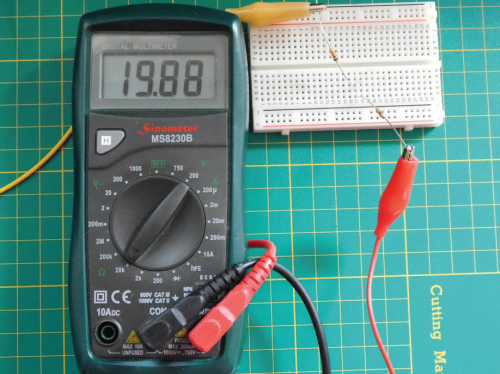
Two 10kΩ (kiloohm) resistors in series read (almost) 20kΩ
The final question is what voltage is across each resistor. Let’s look at the parallel circuit first. One end of each resistor is connected to 5V, and the other end of each is connected to 0V (GND). So clearly, the voltage across each one is 5V. In a series circuit it’s different. We can use Ohm’s Law because we’ve calculated the current flowing through each one (0.025A), and that current flows through both resistors. Each resistor is 100 ohm, so the voltage across each one will be V = I×R = 0.025A × 100 ohm = 2.5 V. This makes sense intuitively, since the resistors have the same value and the same current is flowing through both. It makes sense that the voltage across each would be equal, and half of the total. Remember that it’s unlikely to be exactly half, due to the slop in the resistor values.
Let’s do this one more time with unequal resistors. See Figure 5.

Figure 5: A – series circuit; B – parallel circuit
For the series circuit, we simply add the resistances: 100ohm + 82ohm = 182ohm. The current is 5V / 182ohm = 0.0274725A = 27.4725 mA. Because resistors are inexact, it’s safe to call this 27.5mA. The voltages are 100ohm × 0.0275A = 2.75V across the 100 ohm resistor, and 82ohm × 0.275 = 2.25V across the 82 ohm one. The voltages always have to add up, accepting rounding errors. Relative to ground, the voltage at the point between the resistors is 2.75V. What will happen if we make the top resistor smaller (i.e. have a lower resistance)? The total resistance goes down, the current goes up, so the voltage across the 100ohm resistor goes up. This is what’s generally called a voltage divider.
For the parallel circuit we can use 1/Rt = 1/100 + 1/82 = 82/8200 + 100/8200 = 182/8200 = 1/45, so Rt = 45ohm. The total current is 5V / 45ohm = 0.111A = 111mA. For the individual resistors, the currents are 5V / 100ohm = 50mA and 5V / 82ohm = 61mA. Add these up and we have the total current of 111mA. Parallel resistors act as a current divider.

Two 10kΩ resistors in parallel read (almost) 5kΩ.
I encourage you to create these little circuits on a breadboard and measure the resistances, voltages, and currents for yourself.
Consider what happens if we replace the resistor connected to Vcc in a series circuit with a variable resistor. The voltage between the resistors will vary as the value of the resistor does. As the resistance goes down, the voltage goes up. The reverse is true as well: as the resistance goes up, the voltage goes down. One use of this is to replace the variable resistor with a photoresistor. A photoresistor’s value depends on how much light is shining on it (i.e. how many photons are hitting it, to be precise). More light = lower resistance. Now the voltage divider can be used to measure the strength of light. All you need to do is connect the point between the resistors to an analogue input and read it.
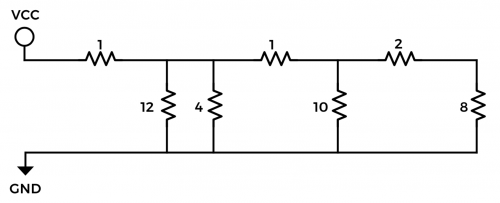
Figure 6 Combined parallel and series circuits
We’ve had a brief look at the basic concepts of electricity: charge, current, voltage, and resistance. We’ve also had a closer look at resistors and ways of combining them. We finished with a practical example of a series resistor circuit being used to measure light.
Website: LINK

Unleash is Now Available on Steam and is 10% off!*
Unleash is a Tower Wars game, set in a dystopian future, where gifted children known as Dreamers are exploited by ruthless fighters to unleash hordes of monsters into arenas filled with massive guns.
*Offer ends October 23 at 10AM Pacific Time Website: LINK
Website: LINK

WARRIORS OROCHI 4 – 無双OROCHI3 is Now Available on Steam and is 10% off!*
WARRIORS OROCHI 4 stars heroes from the DYNASTY WARRIORS and SAMURAI WARRIORS series. 170 playable characters, new magic elements and an all new story enhance the latest entry in this exciting tactical action series.
*Offer ends October 22 at 10AM Pacific Time Website: LINK
Website: LINK

Today’s Deal: Save 25% on Hand of Fate 2!*
Look for the deals each day on the front page of Steam. Or follow us on twitter or Facebook for instant notifications wherever you are!
*Offer ends Wednesday at 10AM Pacific Time
 Website: LINK
Website: LINK
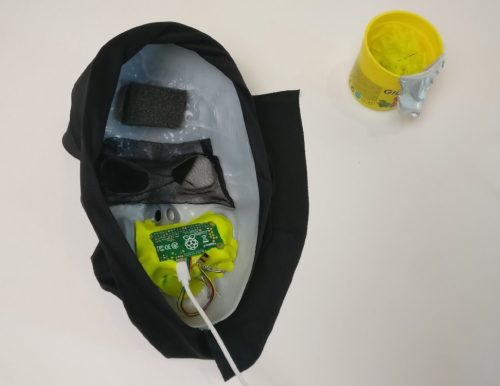
Olivier Ros has put together a short and sweet tutorial for creating your own voice-changing mask for Halloween.
Voice changer with Raspberry Pi Zero for Halloween
How to make a voice changer with Raspberry Pi Zero for Halloween Buy MIC+ sound card on Amazon : goo.gl/VDFzu7 tutorial here: https://www.instructables.com/id/Halloween-Voice-Changer-With-Raspberry-Pi/ https://www.raspiaudio.com/halloween
Grab your ghostly fairy lights, hollow out your pumpkins, and hunt down your box of spooky knick-knacks — it’s Halloween season! And with every year that passes, we see more and more uses of the Raspberry Pi in haunting costumes and decorations.
At the top of the list is an increase in the number of voice changers. And Olivier Ros’s recent project is a great example of an easy-to-build piece costumimg that’s possible thanks to the small footprint of the Raspberry Pi Zero.

Playdough: so many uses, yet all we wanted to do as kids was eat it.
Oliver used a Pi Zero, though if you have the mask fit it into, you could use any 40-pin Pi and an audio DAC HAT such as this one. He also used Playdough to isolate the Zero and keep it in place, but some foam should do the trick too. Just see what you have lying around.
When I said this is an easy project, I meant it: Olivier has provided the complete code for you to install on a newly setup SD card, or to download via the terminal on your existing Raspbian configuration.
You can read through the entire build on his website, and see more of his projects over on his Instructables page.
If you’re looking to beef up your Halloween game this October, you should really include a Raspberry Pi in the mix. For example, our Halloween Pumpkin Light tutorial allows you to control the light show inside your carved fruit without the risk of fire. Yes, you read that correctly: a pumpkin is a fruit.
Halloween Pumpkin Light Effect
Use a Raspberry Pi and Pimoroni Blinkt! to create an realistic lighting effect for your Halloween Pumpkin.
For more inspiration and instructions, check out John Park’s Haunted Portrait, some of our favourite tweeted spooky projects from last year, and our list of some of the best Halloween projects online.
Website: LINK

Today’s Deal: Save 75% on Age of Wonders III!*
Look for the deals each day on the front page of Steam. Or follow us on twitter or Facebook for instant notifications wherever you are!
*Offer ends Tuesday at 10AM Pacific Time Website: LINK
Website: LINK

Today’s Deal: Save 75% on Tales of Berseria™!*
Look for the deals each day on the front page of Steam. Or follow us on twitter or Facebook for instant notifications wherever you are!
*Offer ends Monday at 10AM Pacific Time Website: LINK
Website: LINK
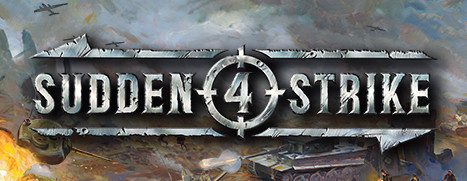
Today’s Deal: Save 75% on Sudden Strike 4!*
Look for the deals each day on the front page of Steam. Or follow us on twitter or Facebook for instant notifications wherever you are!
*Offer ends Sunday at 10AM Pacific Time Website: LINK
Website: LINK
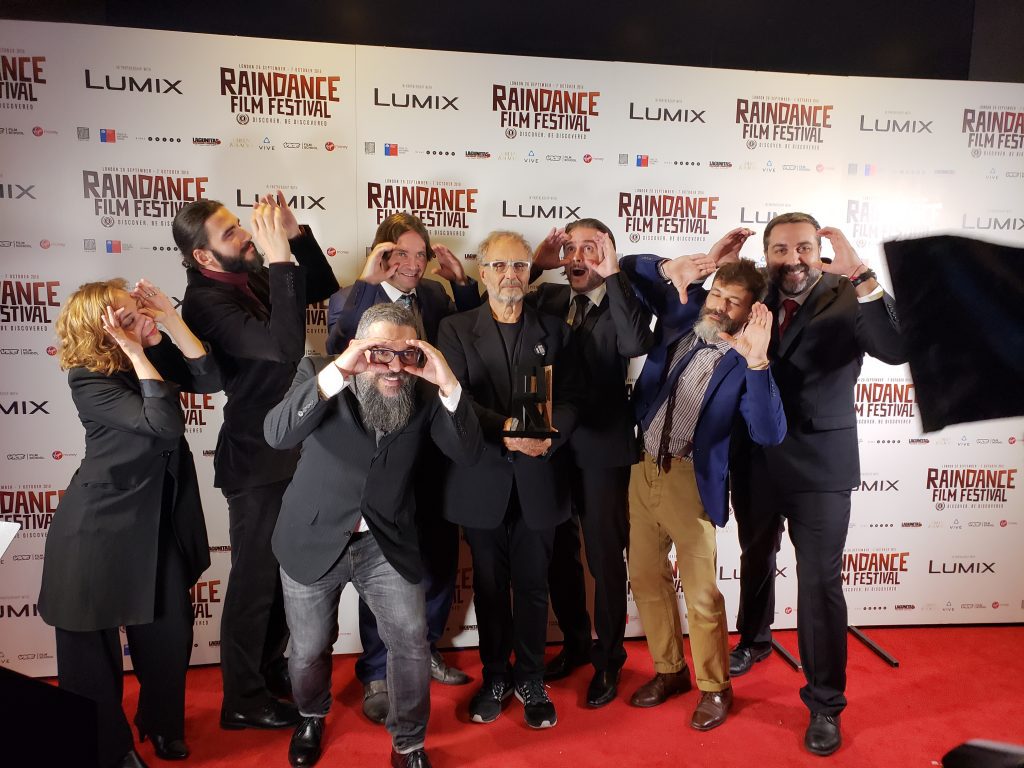
VIVE Studios is pushing the boundaries of immersive storytelling, taking on the challenge of elevating the medium and using the latest technology to tell engaging stories in VR. Last week, VIVE Studios was recognized for its contribution to this new medium as two of the content publisher’s upcoming cinematic titles were shown at the Raindance Film Festival in London. By the end of the week, the newly announced 7 Miracles won the ‘Spirit of Raindance: VR Film of The Festival’ award while Start VR’s Awake: Episode One received a ‘Special Jury Mention in Best Interactive Narrative!’

Raindance marked the first public viewing of 7 Miracles, VIVE Studios’ 7-part episodic film based on the story of the seven miracles of Jesus Christ. Donning VIVE headsets, festival attendees experienced this well-known story for the first time in virtual reality with some scenes completely captured using photogrammetry for a fully immersive experience.
“In the nearly thirty years I’ve been running Raindance I have seldom witnessed a project that combined inspiration and innovation in the way 7 Miracles has,” said Elliot Grove, Founder of Raindance Film Festival. “In the flattie world of Raindance I was instantly floored by Pulp Fiction (1994) then Blair Witch Project (1999) and then memento (2001). 7 Miracles is doing to VR what those three seminal films did for flatties. Sublime.”

The team behind the film, Rodrigo Cerqueira, Marco Spagnoli (Hollywood Invasion, Hollywood on Tiber, Walt Disney and Italy – A Love Story), Enzo Sisti (Aquaman, Wonder Woman, Avengers: Age of Ultron, Passion of the Christ) and VIVE Studios’ Joel Breton (Pirates of the Caribbean, Unreal, Anno 1602, Terrarria) gave a panel discussion at the event giving a behind-the-scenes look into producing a feature-length VR film. The conversation included insights on the unique equipment used in production to how acting in a 360 degree captured video is similar to the theater.
[youtube https://www.youtube.com/watch?v=hDMZOcvFMFI?feature=oembed&wmode=opaque&w=730&h=411]
Part of the VIVE Studios’ portfolio, Start VR’s Awake: Episode One also participated at Raindance this year competing in the Best Interactive Narrative category. Awake: Episode One is an ambitious cinematic experience that fuses interaction with immersive storytelling and advanced production techniques. Awake is a character-driven interactive cinematic VR series that blurs the line between dream and reality, as you are drawn into the perplexities surrounding space, time and the human psyche in its most vulnerable state. Start VR announced the November 15 launch date of Awake: Episode One for the VIVE and VIVE Pro on Viveport, HTC’s VR platform.
[youtube https://www.youtube.com/watch?v=7QIqclFVHVk]
Website: LINK
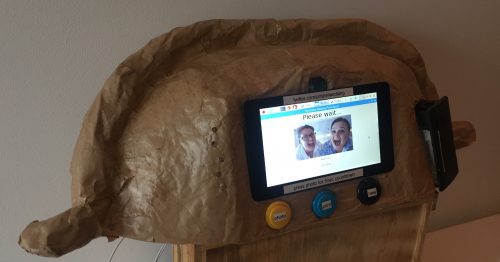
Does your camera giggle and smile as it takes your photo? Does your camera spit out your image from a thermal printer? No? Well, Sophy Wong’s SelfieBot does!
Raspberry Pi SelfieBot: Selfie Camera with a Personality
SelfieBot is a project Kim and I originally made for our booth at Seattle Mini Maker Faire 2017. Now, you can build your own! A full tutorial for SelfieBot is up on the Adafruit Learning System at https://learn.adafruit.com/raspberry-pi-selfie-bot/ This was our first Raspberry Pi project, and is an experiment in DIY AI.
Last year, I built a Raspberry Pi photobooth for a friend’s wedding, complete with a thermal printer for instant printouts, and a Twitter feed to keep those unable to attend the event in the loop. I called the project PastyCam, because I built it into the paper mache body of a Cornish pasty, and I planned on creating a tutorial blog post for the build. But I obviously haven’t. And I think it’s time, a year later, to admit defeat.

The wedding was in Cornwall, so the Cornish pasty totally makes sense, alright?
But lucky for us, Sophy Wong has gifted us all with SelfieBot.
If you subscribe to HackSpace magazine, you’ll recognise Sophy from issue 4, where she adorned the cover, complete with glowing fingernails. And if you’re like me, you instantly wanted to be her as soon as you saw that image.
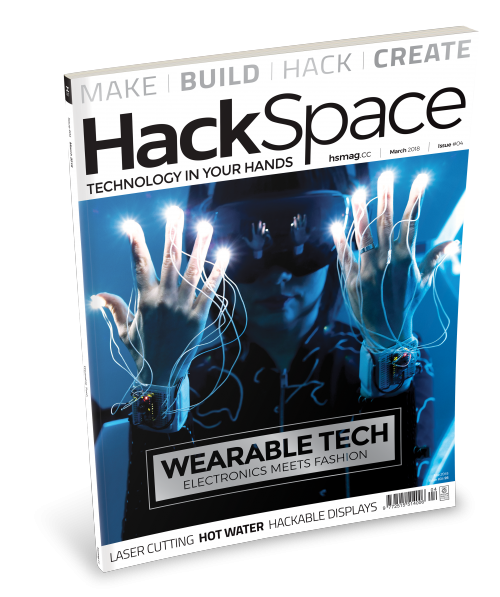
Makers should also know Sophy from her impressive contributions to the maker community, including her tutorials for Adafruit, her YouTube channel, and most recently her work with Mythbusters Jr.
sophy wong on Twitter
Filming for #MythbustersJr is wrapped, and I’m heading home to Seattle. What an incredible summer filled with amazing people. I’m so inspired by every single person, crew and cast, on this show, and I’ll miss you all until our paths cross again someday 😊
I saw SelfieBot in passing at Maker Faire Bay Area earlier this year. Yet somehow I managed to not introduce myself to Sophy and have a play with her Pi-powered creation. So a few weeks back at World Maker Faire New York, I accosted Sophy as soon as I could, and we bonded by swapping business cards and Pimoroni pins.
SelfieBot is more than just a printing photo booth. It giggles, it talks, it reacts to movement. It’s the robot version of that friend of yours who’s always taking photos. Always. All the time, Amy. It’s all the time! *ahem*
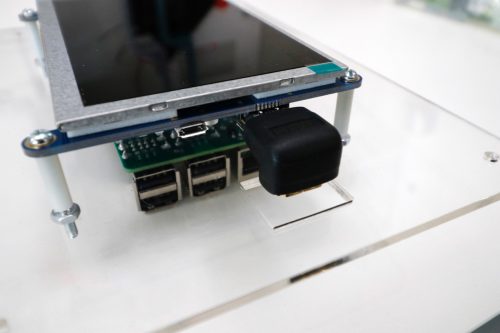
SelfieBot consists of a Raspberry Pi 2, a Pi Camera Module, a 5″ screen, an accelerometer, a mini thermal printer, and more, including 3D-printed and laser-cut parts.
sophy wong on Twitter
Getting SelfieBot ready for Maker Faire Bay Area next weekend! Super excited to be talking on Sunday with @kpimmel – come see us and meet SelfieBot!
If you want to build your own SelfieBot — and obviously you do — then you can find a complete breakdown of the build process, including info on all parts you’ll need, files for 3D printing, and so, so many wonderfully informative photographs, on the Adafruit Learning System!
Website: LINK

Save 20% on Overcooked! 2 as part of this week’s Weekend Deal*!
*Offer ends Monday at 10AM Pacific Time Website: LINK
Website: LINK